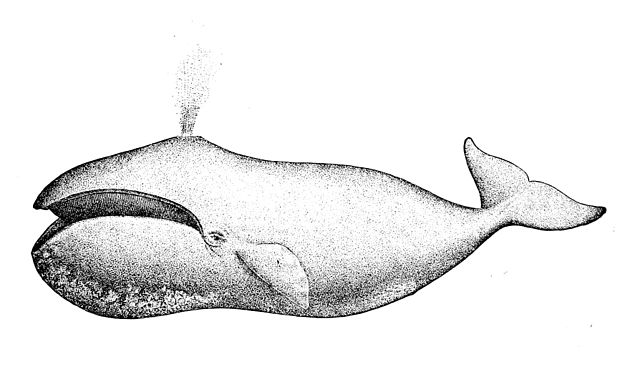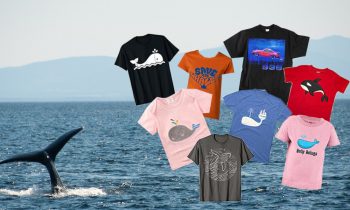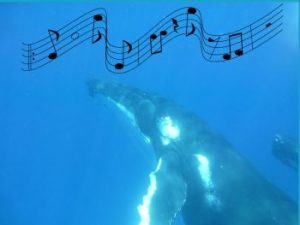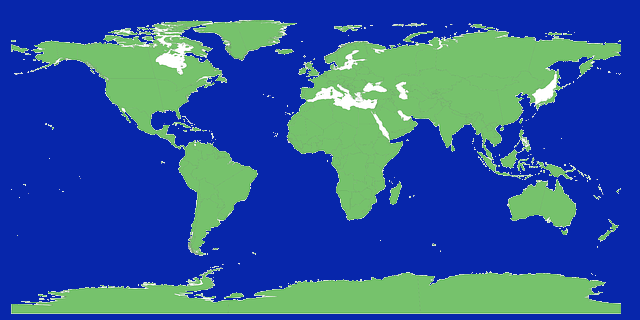
Whales in recent centuries have been the victim of indiscriminate hunting. Currently, factors caused by the human being and their habits is what threatens them. We will examine what is the location of the whales in their different species.
A stock is a group of animals that occupy the same area and interbreed. Although they are of the same species many times they live in different seas or places.
Humpback Whales
Humpback whales were hunted to a large extent in the 19th century and early 20th century. That hunt began to decline in the early 1940s. The capture of the Humpback was about 160,000 from 1910-1985. The population was reduced by approximately 90% before a 1966 moratorium. They were one of the first species protected by the Law on the Conservation of Endangered Species in 1973.
In 1973, the humpback whale was in danger of extinction wherever it was found.
Because whales grow slowly and reproduce slowly, their populations take a long time to recover from decades of intense hunting.
The populations have partially recovered some 80,000 animals worldwide. But it is still less than the estimated population before hunting the 125,000.
Entanglement in fishing gear, collisions with ships and noise pollution continue to impact the species.
His average life is 50 years.
Sperm Whales
Sperm whales can live up to 70 years. However, due to the slow maturation process and the long periods between the birth of young, the populations of this species grow very slowly. In addition, several factors threaten their populations.
Sperm whales were a major objective of the commercial whaling industry from 1800 to 1987. Whaling greatly reduced this population. Although whaling is no longer a major threat, its population is still recovering.
The females only have one calf every 3 or 4 years, so, with a low number of them, it becomes difficult to increase the numbers. Your gestation period is 16 months.
They are very protective of their offspring and work together to ensure that they are well cared for. One or two females submerge to bring food to the younger ones, while the others take care of all of them. The young can not dive deeply due to their need to surface frequently to take air.
It is estimated that the historical population all over the world totaled 1.100.000 specimens before commercial exploitation at the beginning of the 18th century.
Currently, there is no accurate accounting of the total number of sperm whales worldwide. The best estimate of the world sperm whale population is between 300,000 and 450,000 individuals.
Threats to the Sperm Whales
Boats
Ship traffic around the world is increasing. That increases the risk of collisions. Sperm whales spend long periods of time on the surface between deep dives. As a result, it makes them more vulnerable to collisions with ships.
Entanglement
Many different types of fishing gear, including trap lines, pots, and gillnets. These mammals can swim long distances by dragging the attached equipment. That can result in fatigue, compromised eating ability or serious injuries that can lead to death.
Ocean Noise
Underwater noise pollution can interrupt the normal behavior of sperm whales, which depend on sound to communicate.
Marine Debris
Debris in the deep-scatter layer where sperm whales feed can be confused with prey and incidentally ingested, which could result in injury or death.
Blue Whales
Blue whales are among the longest living animals on Earth. Your average life is estimated at around 80 to 90 years.
The gestation period is approximately 10 to 12 months. The average interval of delivery is probably 2 to 3 years.
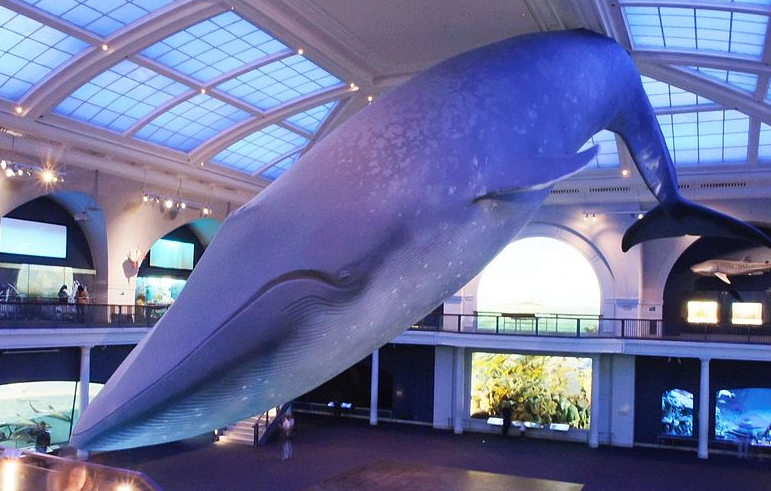
It was estimated that the total world population was between 5,000 and 12,000 specimens in 2002. It continued with that status until 2012.
The Blue Whale Hunting
Commercial whaling carried out historically in the Atlantic reduced the population by approximately 70%. At least 1,500 blue whales died before the 1960s in the waters of eastern Canada.
In the North Pacific, whaling of this species was prohibited in 1966. Internationally, Blue whales are protected by the International Whaling Commission; The Blue Whale is also listed by both the World Conservation Union (IUCN) and the Convention on the International Trade in Endangered Species (CITES).
Estimates of quantities of Blue Whales
In the Antarctic region, the most optimistic estimates show a significant annual increase of 7.3% since the prohibition of hunting. But their numbers still remain at less than 1% of the levels prior to commercial hunting. It appears as an endangered species in the IUCN Red List of endangered species and has been so since the creation of the list.
In the case of the Antarctic subspecies, the larger one, its situation is even worse. It is rated as critically endangered. The highest known concentration of the species, with about 2000 individuals. This is the Northeast Pacific population of the northern blue whale.
It is estimated that the total population of the North Atlantic is between 600 and 1500 individuals.
In the Southern Hemisphere there seem to be two distinct subspecies, the Antarctic blue whale and the little-studied pygmy blue whale. This is found in the waters of the Indian Ocean.
In 1998 less than 1% were probably pygmy blue whales. Estimates of a work done in 1996 resulted in 424 pygmy whales only in a small area south of Madagascar. If this is true, the global populations would be higher than those given by the initial forecasts.
Gray Whales

The average life of a gray whale is 30 to 60 years. Gray female whales usually give birth every two or three years, and their pregnancies last twelve months.
There was a time when there were three different populations of gray whales:
- a population of the North Atlantic, now extinct due to overhunting,
- in Korea and
- to the west of the North Pacific with very few specimens.
The population of Gray Whales in Korea
According to an investigation in 2008 that population is 130 individuals. Its migratory route is presumed to lie between the Sea of Okhotsk and South Korea. This species, in critical danger of extinction, has experienced a hopeful recovery thanks to the collaboration of an oil company with scientists and conservationists to minimize the impact of its activity.
This western population has had a very slow growth rate despite a strong conservation action over the years. It will probably be due to its very slow reproduction rate.
However, as of 2018, the evidence has indicated that the western population is increasing significantly, especially on the island of Sakhalin.
The population of the Gray Whales in the eastern North Pacific
The population has been hunted extensively by commercial and aboriginal whalers, at the end of the 19th century and the beginning of the 20th century. Commercial whaling ended in 1946, and gray whales were classified as endangered.
The most recent estimate of the population from the counts in 2006/2007 was approximately 19,000 whales. And in 2008 it was estimated that it reached 22,000 mammals.
The gray whale population of the eastern Pacific was removed from the list of endangered species in 1995.
This type of whale is an interesting case study because one population is extinct, other is endangered and the other is recovered. It is estimated that the total population of the North Atlantic is between 600 and 1500 individuals.
Beluga Whales
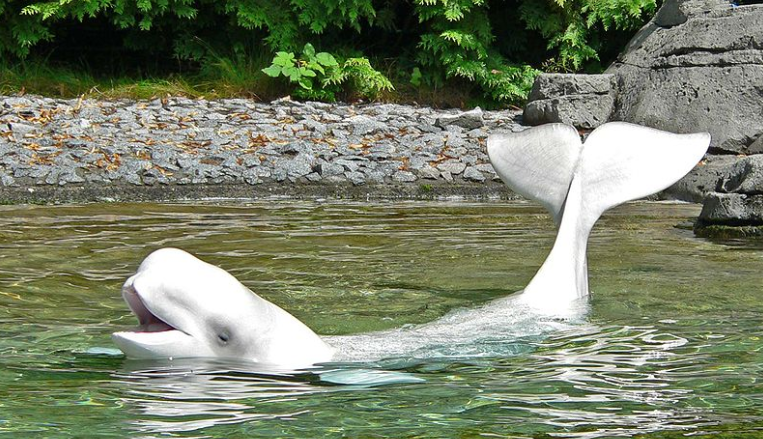
Beluga whales can live for 75 years or more. The pregnancy lasts 14 months and the calves breastfeed for 2 years. The females give birth every 2 to 3 years.
According to the International Union for the Conservation of Nature (IUCN), the world population of belugas for 2008 was 150,000 animals.
In the United States, NOAA Fisheries has identified five populations of beluga whales, all in Alaskan waters:
- the Beaufort Sea,
- the bay of Bristol,
- Cook Inlet,
- East Bering and
- the east of Chukchi. Each stock is unique.
Cook Inlet
The population of Beluga whales in danger of entry into Cook Inlet has decreased by almost 75 percent since 1979. The rapid decline and serious state of the Beluga whale population of Cook Inlet make it a priority for NOAA Fisheries and its Partners to prevent extinction and promote recovery.
In 2008 Cook Inlet recorded a population of between 300 and 400 Beluga whales. NOAA Fisheries included the beluga whales of Cook Inlet as endangered species. The objective is that the partners and interested members of the public work together to recover this species.
Problems faced by Beluga Whales
Belugas, like the other ice whales (narwhal and bowhead), depend on sea ice to protect themselves from predatory killer whales, which are a growing threat as sea ice retreats and opens up new areas for sea life. killer whale.
In 1972, the Marine Mammal Protection Act banned all but Alaska Natives from hunting whales. Unfortunately, there are hunters who take too many whales and sell the muktuk in the Anchorage area and elsewhere. This commercial hunt, combined with a large number of subsistence hunters, has contributed to the decline of Beluga whales by Cook Inlet.
According to the Director of the National Laboratory of Marine Mammals, hunters kill about 20% of the Beluga whales of Cook Inlet each year. The most that a population of belugas can increase through reproduction is about 5% per year.
The population of the Gulf of San Lorenzo
The beluga whale is mainly an Arctic species; the beluga of the estuary of San Lorenzo is located at the southernmost limit of the range and is geographically isolated from other populations. Before 1885, there were up to 10,000 belugas in the estuary and the Gulf of San Lorenzo. In the 1980s, when regular monitoring began, it was estimated that the population was around 1,000 individuals. A slow decline has been observed since the early 2000s, with an estimated population size of 900 individuals in 2012.
Threats to the Beluga Whale in the Gulf of San Lorenzo
Commercial whaling has severely depleted the population. Although whale hunting for belugas has been banned since 1979, there has not been a noticeable recovery in the population.
Several factors seem to contribute to the decline of this species in San Lorenzo. Among them, pollution, the reduction of food resources, the disturbance of human beings and the degradation of habitat are considered the main threats to the recovery of the population. Beluga whales can also be victims of boat attacks and entanglement with fishing gear.
Event 2019
Third annual event “Belugas Count!” in 2019 !!!!
It will take place on Saturday, September 21, from 10am to 5pm, in the Anchorage area.
It is free and open to the public.
From 10am At 2pm, members of the public are invited to help detect and count Beluga whales from Cook Inlet!
This all-day scientific celebration aims to bring together members of the public to focus on the endangered Cook Inlet beluga whale, fostering local pride, awareness and management.between 600 and 1500 individuals.
Narwhal Whales
The Narwhal Whales inhabit the waters of the Arctic region in northern Canada, the sea on the Russian side of the Arctic Ocean and in Western Greenland. Most of the population is concentrated in the fjords and inlets of northern Canada and western Greenland.
They are one of the many mammals that are being threatened by human actions. Estimates of the world population vary from 50,000 (from 1996) to around 170,000 between the years 2000-2017.
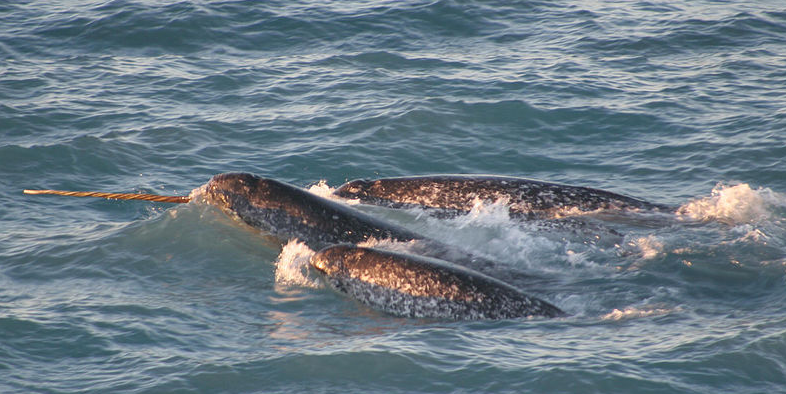
Credit Dr. Kristin Laidre, Polar Science Center, UW NOAA/OAR/OER [Public domain]
The populations of Narwhal are estimated at 80,000, with more than three quarters spending their summers in the Canadian Arctic. There are two major narwhal populations found in Canada: the Baffin Bay and Hudson Bay populations.
What Threat to the Narwhal Whales?
Factors impacting Narwhal populations in Canada include hunting, contaminants (mercury and cadmium), industrial activities such as commercial fishing, and climate change. The commercial Turbot fishery may also impact the Narwhal since these animals feed almost exclusively on Turbot in the winter.
In an effort to support conservation, the European Union established a ban on the import of tusks in 2004. The United States has banned imports since 1972 under the Law on the Protection of Marine Mammals.
Right Whales
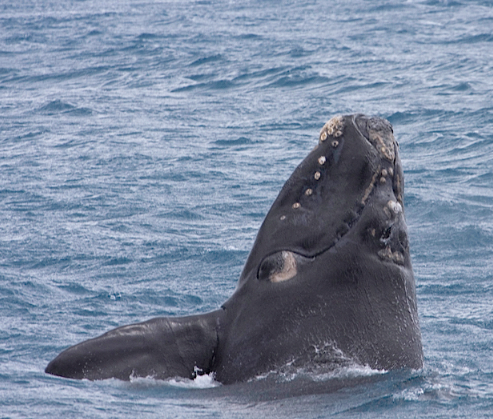
By their distribution, they can be divided into three different groups of frank whales. A group of right whales live in the North Atlantic, some are in the North Pacific, and the rest (the vast majority) are found in the southern, Pacific and southern Indian regions. Since the places where most of the population estimates live are well separated, it is done by a group.
Their numbers are dangerously low, and aggressive conservation methods are necessary to offer them hope of survival.
One of the main causes of death of the right whale is due to head injuries, often due to collisions with large boats that frequent their habitat. Research has been carried out to identify the patterns of these whales, in order to divert large vessels from their main destinations.
The glacial frank whale
They start giving birth at nine or ten years and the duration of pregnancy is around one year. The interval between births seems to have increased in recent years and now the averages are three to six years. Before 2000 there was an average of 12 calves per year but between 2001 and 2005 that figure increased to a range between 16 and 31.
Pregnant females migrate in the winter to subtropical waters (Florida and Georgia) and births take place there.
From 2000 to 2010, the species seemed to be on the right track: its population was growing. By 2007, the population had increased from approximately 350 to 419, reaching a maximum of fewer than 500 whales in 2010.
At present, the population of the Glacial Frank Whale in the western Atlantic has about 350 specimens. Since 1986, 50 whales have died, of which at least 19 were due to collisions with ships and 6 when entangled in nets. These data, although good, are not very encouraging since they would imply an increase of 1.6 percent per year, which is not enough to alleviate the losses suffered by unnatural causes.
Because it is an animal that nothing slow and that floats once dead is very easy to hunt. And his body yields the equivalent of 40 barrels of oil (7200 liters).
The last few years have been desperate for the Right Whales. The 20 unprecedented deaths of whales in 2017 and 2018 represented a loss of more than 4 percent of the population in difficulty. In 2017, 12 deaths were reported in Canadian waters and five in US waters. UU So far in 2018, three mortalities have been reported, all in the United States.
Southern Right Whale
It is estimated that there are some 8000 Southern Right Whales in the world at this time. These whales can live from 60 to 120 years of age and the population grows at a rate of 7% per year, so it doubles approximately every 10 years.
The Southern Right Whale inhabits a wide swath ranging from 20° to 60° latitude in the South Pacific, South Atlantic, and South Indian Oceans.
The indiscriminate hunting of these specimens put her in danger of extinction. Since the 19th century, its original population has been reduced by up to 90%.
In 1984, a law was passed that declared a natural monument to all right whales that can be seen in the waters of Argentina. This decision is based on the imperative need to grant it due to protection. It reproduces and suckles its young in austral waters.6 It insists on the possibility of creating a sanctuary for the preservation of this species in the South Atlantic.
In 2018 more than a thousand specimens of the southern right whale reached the coasts of Chubut, which represents the largest number in recent years. A total of 1,079 animals could be counted, of which 774 are females with 387 offspring and around 250 adults, among females or solitary males that come to copulate.
That was a record because the average is between 700 and 800.
Northern Pacific Right Whale
The species is divided into two subpopulations. One lies between the Sea of Okhotsk, the Kuril Islands and the coast of the Kamchatka Peninsula. The other would be located in the Bering Sea and the Gulf of Alaska.
After the great hunting campaigns that began in 1835, where whales of all species were intensively hunted, the right whale populations of the North Pacific were on the verge of extinction as they had killed about 19,000. After these campaigns, the International Whaling Commission decided to ban its commercial fishing.
It is in danger of extinction since its number is between 100 and 300 individuals. The subpopulation of the Bering Sea was practically extinct, only solitary individuals were seen.
In 1996, 4 individuals were seen together for the first time. Since then the number of specimens identified varied between 3 and 13.
Years later, through genetic analysis, the increase in individuals was ascertained, which went from a maximum of 13 to 25 individualized animals. In 2002, a whale with its calf was found in the area, being the only breeding female observed in years. All this could indicate a slight population increase in this area.
Bowhead Whales
Live, in its entirety, in the fertile waters of the Arctic and sub-Arctic. It is also known as Greenland whale or Right Whale of the Arctic. The Bowhead Whale is perhaps the longest living mammal with the largest mouth in the animal kingdom.
The females produce a calf every 3 to 4 years, after a pregnancy 13-14 months.
The Bowhead Whale is on the list of endangered species under the auspices of the United States Endangered Species Act.
It is generally recognized that there are five stocks of Bowhead Whales.
These include:
1) the Western Arctic stock in the Bering, Chukchi and Beaufort Seas,
The population has recovered since the commercial harvest of this stock ceased. A 2011 study estimated that the Western Arctic Bowhead population was 16,892.more than triple the population estimate in 1978. This study puts the annual growth rate at 3.7% from 1978 to 2011.
2) the Hudson Bay and Foxe Basin stock,
The size of the original population of this local group is not clear, but possibly around 500 to 600 whales
3) the Baffin Bay and Davis Strait stock,
In 2008, there was a new estimate of 14,400 animals. If climate change substantially reduces sea ice, these whales could be threatened by increased maritime traffic. There were about 1,200 in western Greenland in 2006, while the population of Svalbard can only count in tens. However, the numbers have increased in recent years.
4) the Sea of Okhotsk stock,
According to Russian scientists, this total population probably does not exceed 400 animals.
5) the Svalbard-Barents Sea stock.
The most threatened population, but historically the greatest of all. In 2015, a refuge was discovered throughout eastern Greenland. There the whaling ships could not reach due to ice floes. In conclusion, they found a number of whales from 80 to 100 individuals.
Pilot Whale
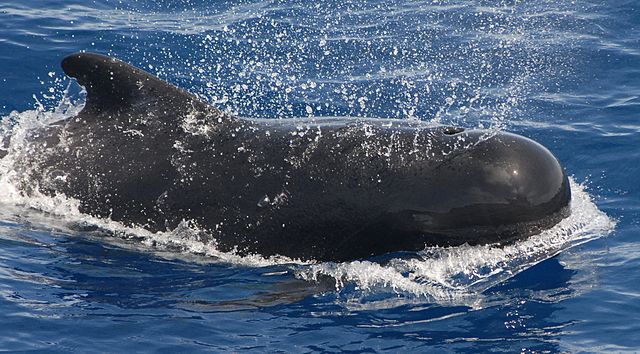
Estimates tell us that they have a longevity of 45 years. The pregnancy lasts approximately 12 to 16 months and the birth occurs once every 3 to 6 years.
Researchers believe that there are 1 million long-finned pilot whales and approximately 200,000 short-finned pilot whales around the world. The two species differ slightly in size, characteristics, coloration, and pattern. In the field and in the sea, it is very difficult will find a review of the most well-known population of whale species, the attacks they received and protection measures.
Pilot whales have been hunted for their meat, bone, oil, and fertilizer. And this practice continues in some areas. They adapt easily to captivity, therefore they are displayed in many Aquariums and ZOOs.
This species of whale is found throughout the world in tropical and temperate oceans. Three populations of short-finned pilot whales are recognized in the waters of the United States, which live along the east and west coasts of the United States, and around the islands of Hawaii. Now it is believed that there are around 800 animals in the stock of the west coast. Approximately 21,500 animals live in the stock on the east coast, and it is believed that about 9,000 animals live in the Hawaiian stock.
Minke Whale
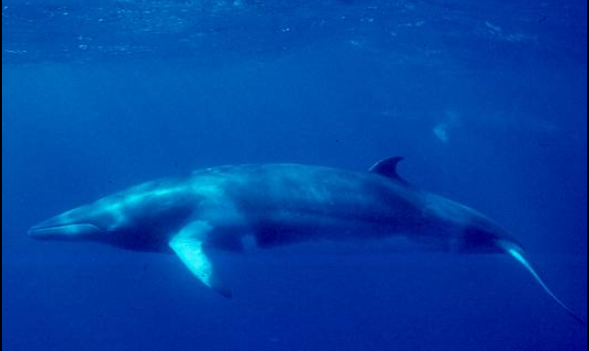
Scientists estimate that minke whales have a longevity of up to 50 years.
The smallest of the types of baleen whales is the minke whale.
It is not very social, many of them tend to live in peace, others have a partner or a group of three.
The gestation of these whales is 10 months and the lactation period is almost 6 months
.
We can find minke whales in all oceans, but they tend to stay away from the polar regions.. Also, they do not go to tropical regions as often as other types of whales do.
North Atlantic
Those who study that species of whales estimate that there are more than 180,000 minke whales.
North Pacific
The surveys of sightings aboard ships that covered the Sea of Okhotsk 1989, 1990 estimated that there were 25,049 Minke whales.
Southern Hemisphere
The Scientific Committee of the International Whaling Commission estimates the population. The 2004 estimate reported 515,000 individuals for the minke stock in the Antarctic zone.
You may also like…
In ofWhale.com you can find the online whale toys you’re looking for, like baby shark toys, stuffed toys or a whale bath toy. Let’s get started with the selected gallery or check more options on the links.
In our world, whales have a great message to transmit to humanity and we agree with them. For you and for your children choose the whale t-shirts best fits your message
Most people loves whales enjoy using CDs with the whale sounds , whale songs and sounds of the waves to obtain a peaceful and restful sleep, perform meditation and relaxation.
Ofwhale.com is the right place where you can get the whale pictures you deserve for your home. Read more about the feelings you convey and the styles you can choose.


